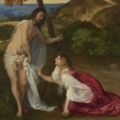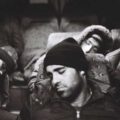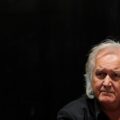A Tale of Two Poets: Aridjis and Tranströmer

This is the tale of an intercontinental friendship between two poets, one from a land where the sun sometimes shines at midnight, the other from a country where centuries ago human sacrifice was thought to keep the sun moving across the sky.
My earliest acquaintance with Tomas Tranströmer’s poetry and his world was in the Autumn 1971 issue of Modern Poetry in Translation, where I read “The Journey’s Formulae,” with its closing image of the writer simultaneously “eagle and mole,” burrowing into reality and soaring above it, and “Morning Birds,” where the full-grown poem pushes the writer out of the nest, and “Further In,” the writer stepping in the footprints of the badger, in quest of one precious stone that “can make the darkness shine.” And the first time I met the man himself was in June 1975 at Poetry International Rotterdam, founded in 1970 and Europe’s best poetry festival for many years. Among other poets present that year were Czeslaw Milosz, Michael Hamburger, and Bert Schierbeek. In Rotterdam Tomas surely must have read from Baltics, his long poem published in 1974, a meditation on the passage of time and an excavation of the self as it unfolds through the cycles of nature and via the histories of his own family and of Runmarö, the island where he and his wife Monica have a summer home. His firm, steady voice conveyed to me the sincerity and depth of his poetry.
In October of that year I came to Sweden for the first time, as a guest of the Swedish Institute, and visited Tomas and Monica in Västeras. After lunch Tomas took me to his favorite place in the city, the cathedral, a soaring gothic-style brick church begun in the 13th century and finished in the 19th, which harbors a treasure: a magnificent pipe organ with 4,186 pipes and 65 stops. Tomas showed me around the church, but what he most wanted me to see was the organ. During the 35 years they lived in Västeras he would visit the cathedral regularly on Saturdays for the organ concerts, which Monica has called “an important ritual,” attending the concerts after they moved to Stockholm whenever he was in Västeras.
In August 1981, when I was director of the Cultural Institute of my native state, Michoacán, my wife Betty and I held a weeklong poetry festival in the pink stone colonial city of Morelia. The festival was a convergence of the planets in the universe of poetry, for among the participants were Jorge Luis Borges, Günter Grass, Seamus Heaney, Octavio Paz, Allen Ginsberg, Andrei Voznesensky, Kazuko Shiraishi, João Cabral de Melo Neto, Vasko Popa, Tadeusz Rózewicz and Tomas. A strong friendship between Seamus and Tomas was cemented during that week. This would be Borges’s last visit to Mexico. When we settled him in with the other poets at the hillside hotel called Villa Montaña, he commented on its beauty. I asked him how he could know that, as he was blind, and he replied, “Because it smells of roses.”
In collaboration with the Swedish-Rumanian polyglot Pierre Zekeli, I translated some of Tomas’s poems for the festival readings, including “Morning Birds,” “The Couple,” “Solitary Swedish Houses,” “Track” and “Kyrie.” This is our translation of “Kirie,” in evocation of Tomas’s visit to Mexico:
A veces mi vida abrió los ojos en la oscuridad,
como si una multitud ciega y angustiada
pasase por las calles, camino a un milagro,
mientras me detenía invisible.Como el niño que se duerme con terror
escuchando los pasos pesados de su corazón,
Lentamente hasta que la mañana pone rayos en las cerraduras
y se abren las puertas de la oscuridad.
Tomas and Monica went on the excursions to Patzcuaro, Lake Zirahuén and the Purepecha Indian town of Santa Clara del Cobre. I took Tomas to Morelia’s baroque cathedral to see and hear the 4,600-pipe organ, a contemporary of the organ in Västeras. The organist and founder of Morelia’s annual international organ festival, Alfonso Vega Núñez, played a Bach fugue for him, and they soon became friends. I remember telling Tomas that the organ music made me think of the cenzontle, the Nahuatl word for the bird with 400 voices. A few years ago we were able to send Tomas a set of CD recordings of restored historic organs in the state of Oaxaca,
A year or two after the Festival, finding myself in Sweden again, I visited Tomas and Monica in their summer cottage in Runmarö. After lunch, Tomas and I walked through the woods talking about poetry and music, and about the Psalms, which he was then translating in collaboration with a theologian to make more poetic versions in Swedish. We were distracted by swarms of mosquitoes, more than I had ever seen in my life.
The Vagarth World Poetry Festival, a centenary tribute to Jawaharlal Nehru, was held at the Bharat Bhavan arts center in Bhopal, in the state of Madhya Pradesh, India in January 1989. Betty and I had just arrived after a grueling trip from Mexico when to our great surprise we found ourselves with Monica and Tomas in an Ambassador taxi weaving its way as fast as possible through crowds and cows. Among the other poets gathered in Bhopal were Stephen Spender, Nicanor Parra, Miroslav Holub, and Malayalam poet Ayyappa Paniker.
A gas leak disaster had taken place on December 2-3, 1984 at the Union Carbide pesticide plant in Bhopal, killing thousands and injuring half a million. At the elegant, lakeside building housing the festival, protestors against Union Carbide and the government brandished banners, one of which read “The gas-affected city needs food and relief and not poetry.” The poets gathered outside the plant to read poems as a public protest.
When asked in an interview if he could write a poem about the Bhopal gas disaster, Stephen Spender replied: “I know there is this criticism that the money spent on this festival would be better spent on the poor…The only answer I can give is that if throughout history all the money that was spent on the arts were spent on the poor, we wouldn’t have had a civilization.” One morning Tomas told me that whenever a certain Sikh poet saw him he hurried over to complain angrily that he felt very insulted by him. ‘By me?’ Tomas asked. ‘Yes,’ the poet replied. ‘In your autobiography you wrote that as a child your mother forbade you from playing with children like me.’ ‘My mother?’ “Yes. You say it in your autobiography, World Within a World.’ ‘Aren’t you mistaking me for someone else?’ ‘Aren’t you Stephen Spender?’ To which 57-year-old Tomas replied, ‘Do I look like I’m 80 years old?’ “Yes,’ said the Sikh poet.
Tomas was very popular at the festival, and wherever he went legions of autograph hunters begged him to sign his name on paper napkins, notebook pages, books by other writers, even toilet paper. In truth, they besieged all the foreign poets, coming to our tables at meals, waiting outside our hotel rooms or following us into the public bathrooms. At the extension of the festival in New Delhi, Tomas was roped into organizing and chairing interminable round tables, prompted by his always generous spirit and his sense of duty, honed by years of working as a psychologist with juvenile delinquents.
The following year Tomas suffered a stroke that left him partially paralyzed on his right side and virtually unable to speak. However, as Monica wrote us six months later, “Tomas is much stronger now. He takes short walks, reads and plays the piano with his left hand. His piano playing is very good. The problem is his speech. But he works very hard to get it back. To write is also a problem. But he “composes” poems and also a small autobiography with old sketches – he has a lot. It works well. In some way it’s like his old method. So life goes on.” And in our sadness about Tomas’s condition we took comfort in knowing he could depend on Monica’s constant and unflappable devotion and his own spiritual strength. It was an extraordinary, almost premonitory coincidence that 26 years before his own stroke Tomas had written in Baltics about the Russian composer Vissarion Shebalin, who suffered a cerebral hemorrhage, resulting in “paralysis on the right side with aphasia,” who “went on composing.”
In the spring of 2016 there was an exhibition at the Västeras Cathedral called “See Tranströmer – 20 Photographers’ Interpretations,” for which each photographer chose one of his poems as an inspiration. Scattered about the streets of Västeras are seven paving stones inscribed with haiku poems written by Tomas after he suffered his stroke.
These are a few of those haikus:
The power lines stretched
across the kingdom of frost
north of all music.The sun is low now.
Our shadows are giants.
Soon all will be shadow.The presence of God.
In the tunnel of birdsong
a locked seal opens.
The last time I saw Tomas was in early April of 1998, when as president of PEN International I travelled to Stockholm for a UNESCO meeting. We sat in the living room while Monica, his inseparable guardian angel, translated the language of his sounds, gestures, and facial expressions into words.
Over the years, until his death on March 26, 2015, Betty and I corresponded with them—the letters and emails were invariably signed “Tomas and Monica”. I always thought of him as an older brother in poetry and I often feel his presence.
Translated by Betty Ferber
About Homero Aridjis
Homero Aridjis is a Mexican poet, novelist, environmental activist, journalist and diplomat known for his originality and independence.





